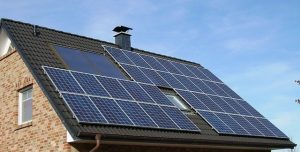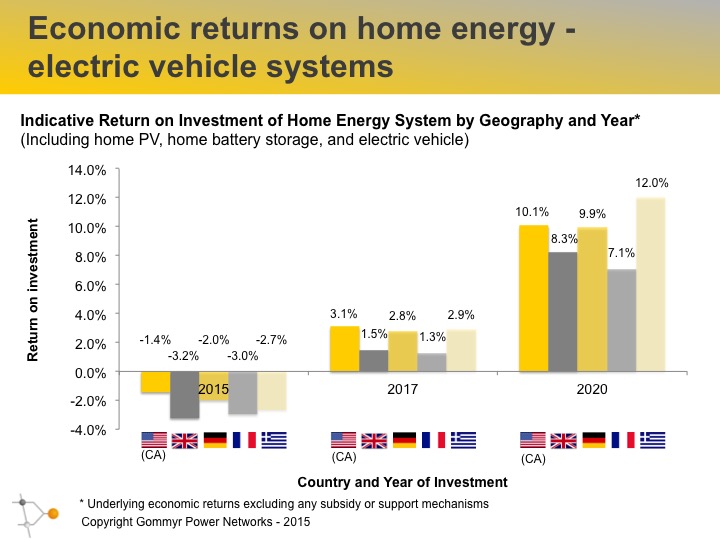
Distributed home energy systems – fast approaching break-even
As interest in distributed renewable generation and home energy system intensifies, it is useful to understand the underlying economics of such systems. Although there are many configurations for home energy systems, we have looked at a system including photovoltaic power generation, battery energy storage, electric vehicles and a control system with moderate load control. We are not including energy efficiency in the system evaluation, as many core energy efficiency measures are economically positive and should be implemented before installing home generation and power storage. This provides a better underlying demand that avoids installing excess generation and storage than if energy saving measures are implemented later. However, some load control and demand response is included that allows improved matching of the home power demand and supply.
The return on home energy systems varies significantly based on location, as local consumption patterns, driving culture and renewable resource have large impacts on the economics of the system. In this analysis, public incentives (including subsidies, rebates or tax benefits) are explicitly excluded to allow evaluation of the underlying economics and comparison across markets.

Interestingly, though all the markets reviewed currently have low negative returns on the investment in 2015, the returns are forecast to become positive within two years and increase rapidly by 2020 to attractive rates of return of 7-12%. Given that in most markets today secured debt financing can be obtained at under 5%, the return to owners or equity-holders could be substantially above this range. In the short term, promoting early adoption does require support, such as through public subsidies or tax breaks. Fortunately, these support measures should only be required for the short term and the underlying positive economics will drive the market within 5 years. The rapid increase in investment returns for the renewable home energy and electric vehicle systems is largely based on battery improvements and related price reduction that is reflected in both the home energy storage and electric vehicle costs.
These results are indicative expectations for the aggregate of the simple home energy systems within the given geographic market. There will be large variations within each market based on the specific user and home characteristics such that there will be home energy systems with positive economics today and still be home energy systems that will not be economically feasible in 2020. Between the markets, Greece achieved high returns based on good solar irradiation and relatively high fuel and power prices. France achieves lower returns due to low power prices and relatively low annual driving distances.
Overall, achieving break-even and the rapidly improving investment returns on these home energy and electric vehicle systems will give strong momentum for continued market growth. Already many countries have subsidies and tax incentives in place for renewable home energy and electric vehicles which is already driving growth in the short term.